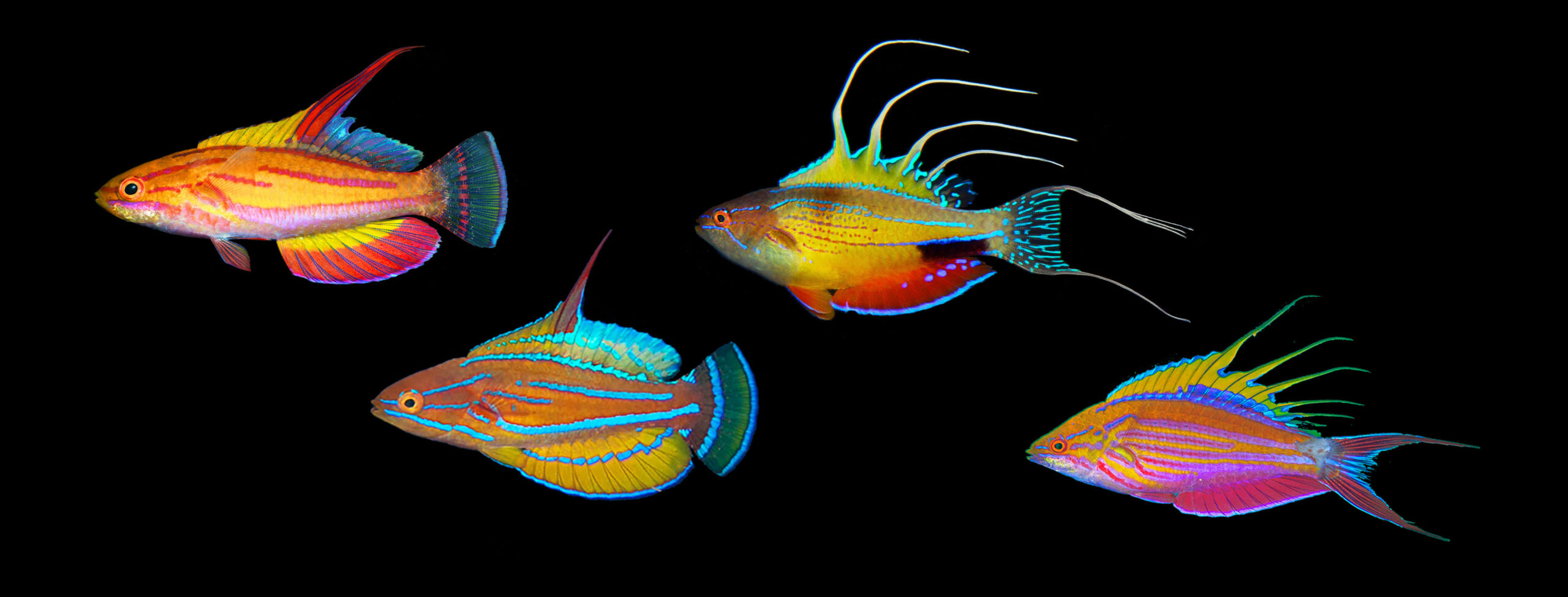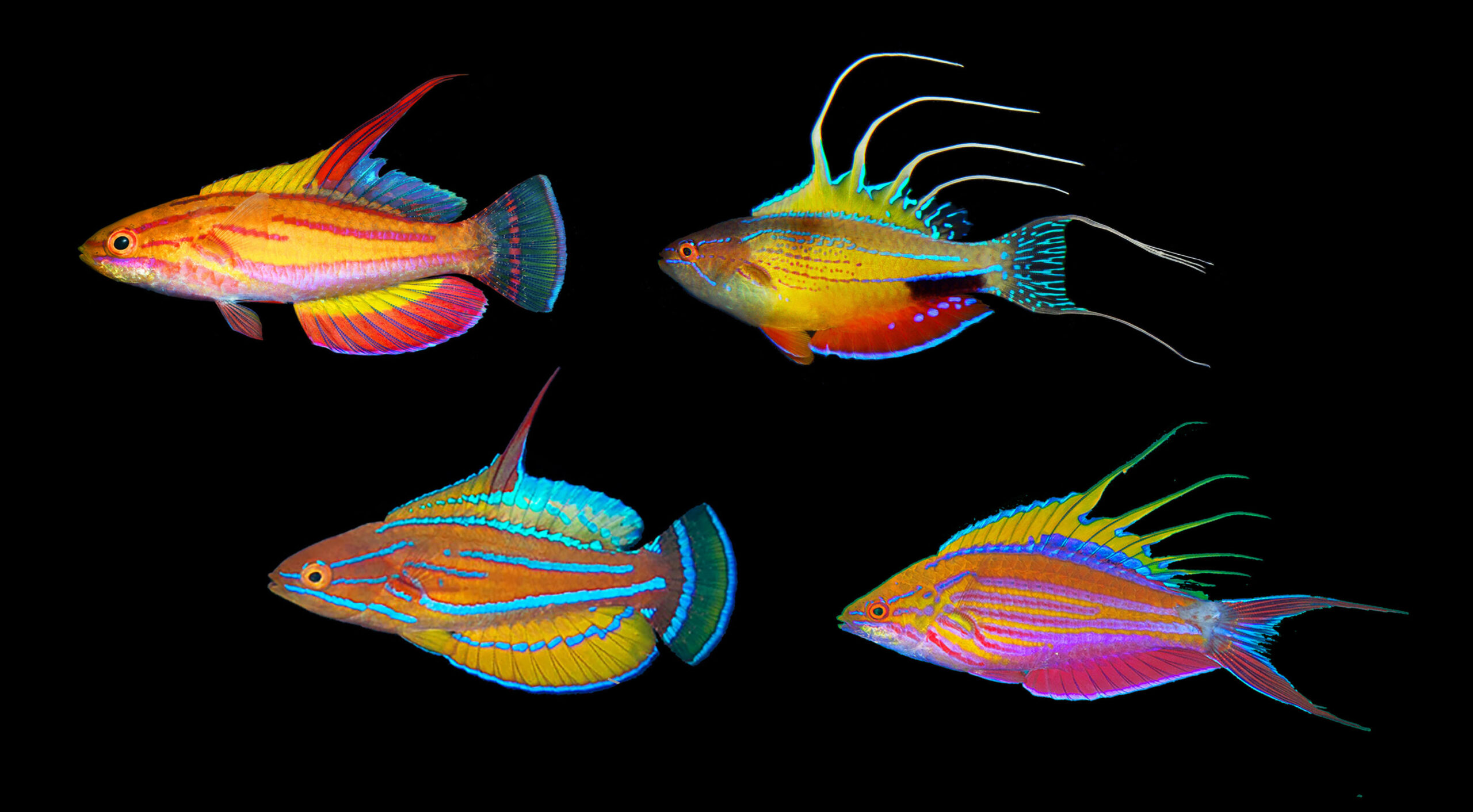
The eponymous flasher wrasses are so named for their dazzling courtship displays, in which males flash iridescent neon colours to attract females and to ward off rival males. This behaviour is best appreciated about an hour before sunset, or as many home aquarists would agree, about thirty minutes before the lights on the home aquarium go off. Indeed, the flasher wrasses are a well-loved and well-known group of fishes popular as aquarium fishes. You’d think we’ve learnt all there is to about this group. Yet this apparently isn’t the case.
The flasher wrasses are represented by about twenty or so species found throughout the Indo-Pacific. Distribution of the flasher wrasses is, however, not symmetrical, and the genus attains its greatest diversity in the Coral Triangle. Despite Australia’s northern half abutting the Coral Triangle, the distribution and occurrence of flasher wrasses in Australia and its remote territories are not well understood. A new study published today in Ichthyology & Herpetology revisits this popular group with fresh eyes. Just how many species of flasher wrasses occur down under? And to what extent are the identities correct?

Based on previous checklists and surveys, three species of flasher wrasses have been reported as extant – they are: Paracheilinus filamentosus, the Filamented Flasher Wrasse; Paracheilinus flavianalis, the Yellowfin Flasher Wrasse, and Paracheilinus rubricaudalis, the Redtail Flasher Wrasse. Paracheilinus flavianalis was described from specimens collected off northwestern Australia but the status of the remaining two species in Australia has been doubtful.
An in-depth review of the literature and examination of specimens in all state museums in Australia revealed a surprising state of affairs – that we know very little about these incredible fishes living right under our noses! There were several issues that needed rectifying here, the first of which was the identity of P. rubricaudalis, the Redtail Flasher Wrasse. This species is known primarily from Melanesia, including Papua New Guinea, the Solomon Islands, Fiji, and Vanuatu. In Australia, it has been reported from the Coral Sea and the northern Great Barrier Reef. Examination of museum specimens and photographic records reveal that the Australian population represents a highly distinct and geographically isolated species different from the “true” P. rubricaudalis.
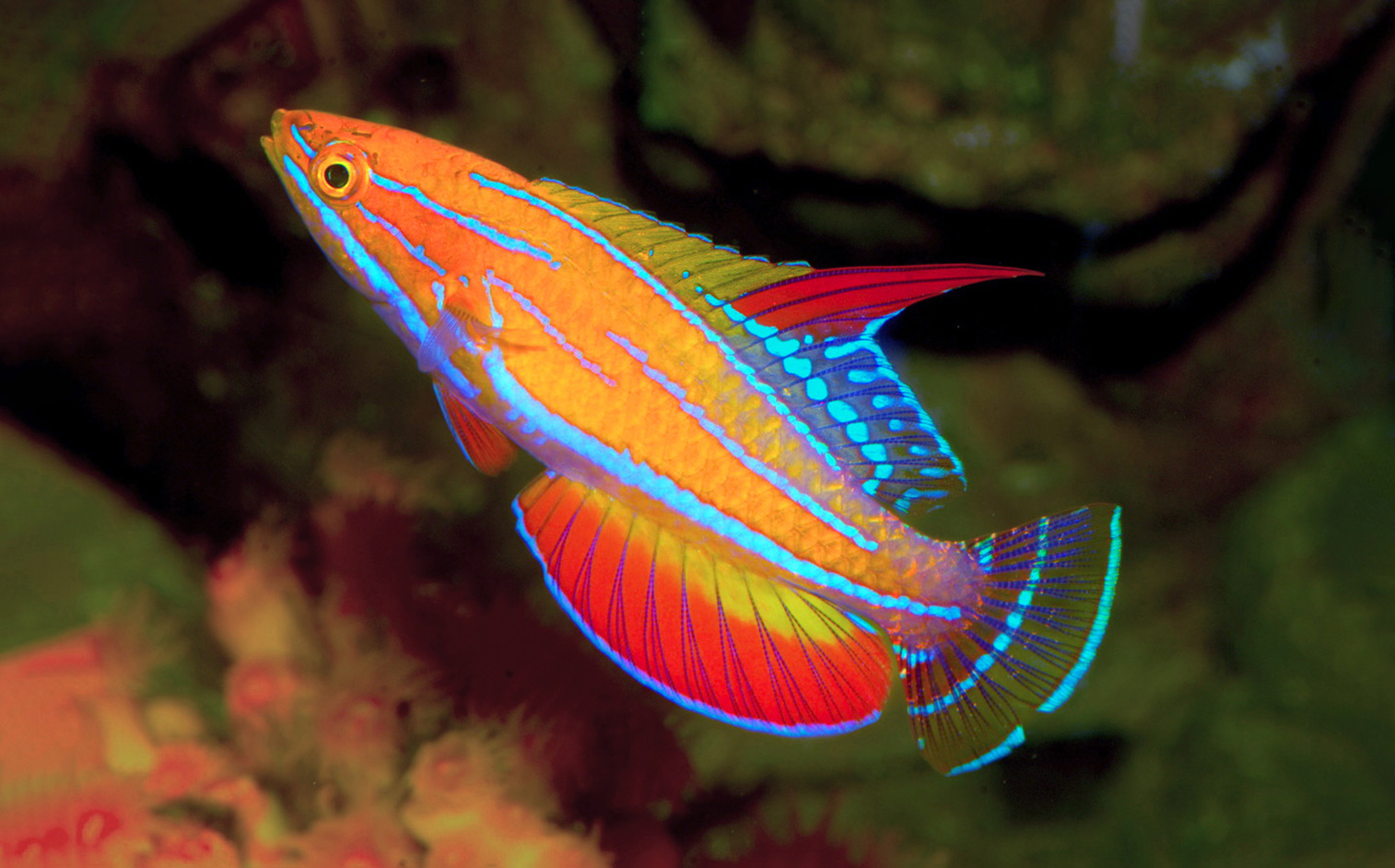
The Australian population is distinct from P. rubricaudalis and all other flasher wrasses on the basis of molecular and morphological data. Aside from differences in color pattern, the species is unique in possessing a dorsal filament consisting of three segmented rays bound by membrane (versus the usual one or two). To distinguish this species from P. rubricaudalis, it is described as the new species Paracheilinus amanda. The species is named after Amanda Hay, ichthyology collections manager at the Australian Museum.
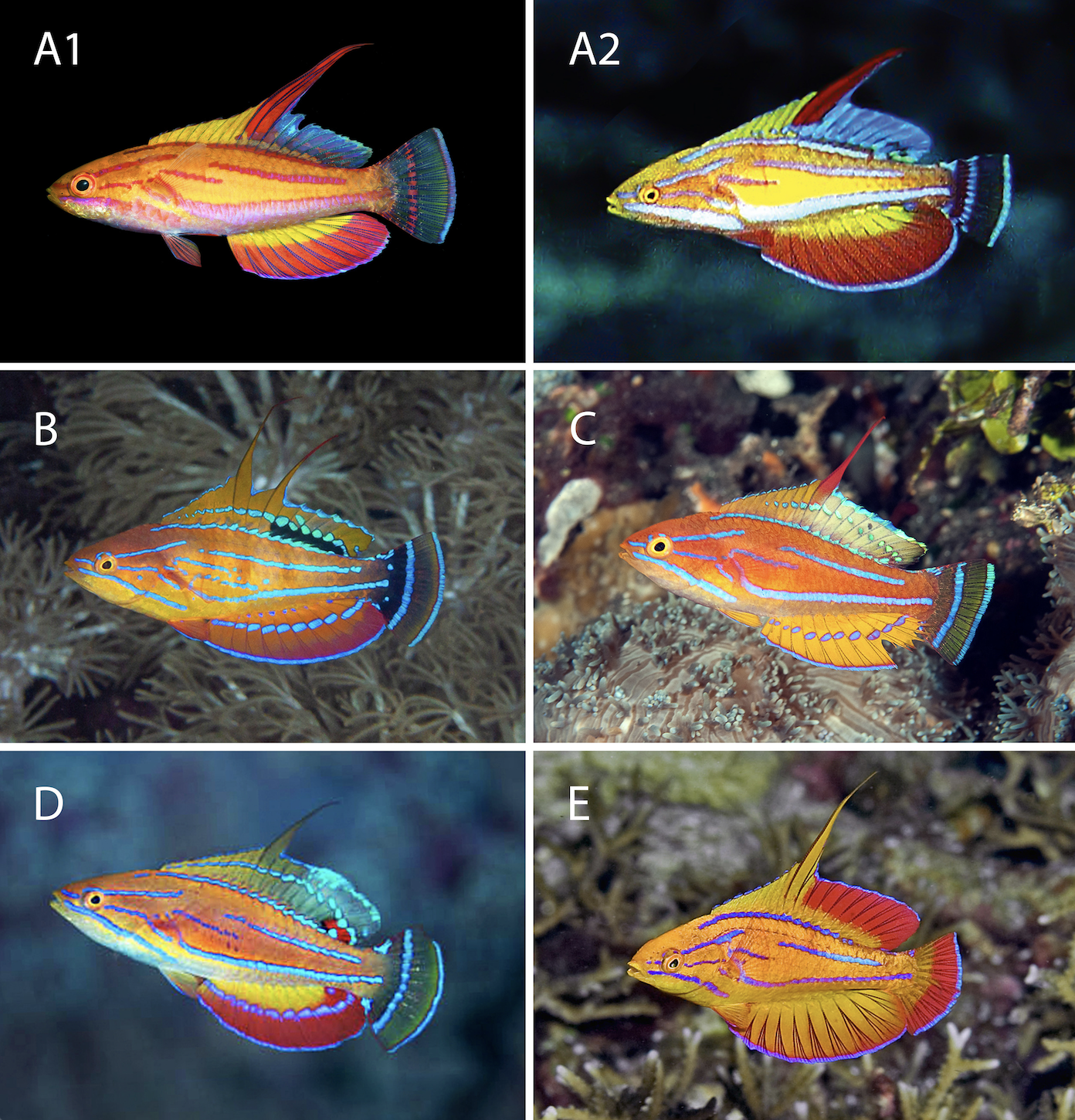
Paracheilinus amanda belongs to the P. mccoskeri species complex of flasher wrasses, which includes P. carpenteri, P. flavianalis, P. mccoskeri, and P. rubricaudalis. The five species are united in sharing a unique combination of characters, including body with stripe pattern B, a rounded caudal fin with two concentric bands, and with the exception of P. carpenteri and P. flavianalis, dorsal fins with a single filament. The members of this group are among the smallest in the genus, with males rarely exceeding six centimetres. The newest species, Paracheilinus amanda, is found in the Great Barrier Reef off Australia’s northeastern coastline. It also occurs in the Coral Sea, reaching north to Papua New Guinea’s southern coast. The body stripe pattern of Paracheilinus can be broadly categorised into four patterns. Pattern A, A’, B, and C. Only a handful of species depart from the patterns above.
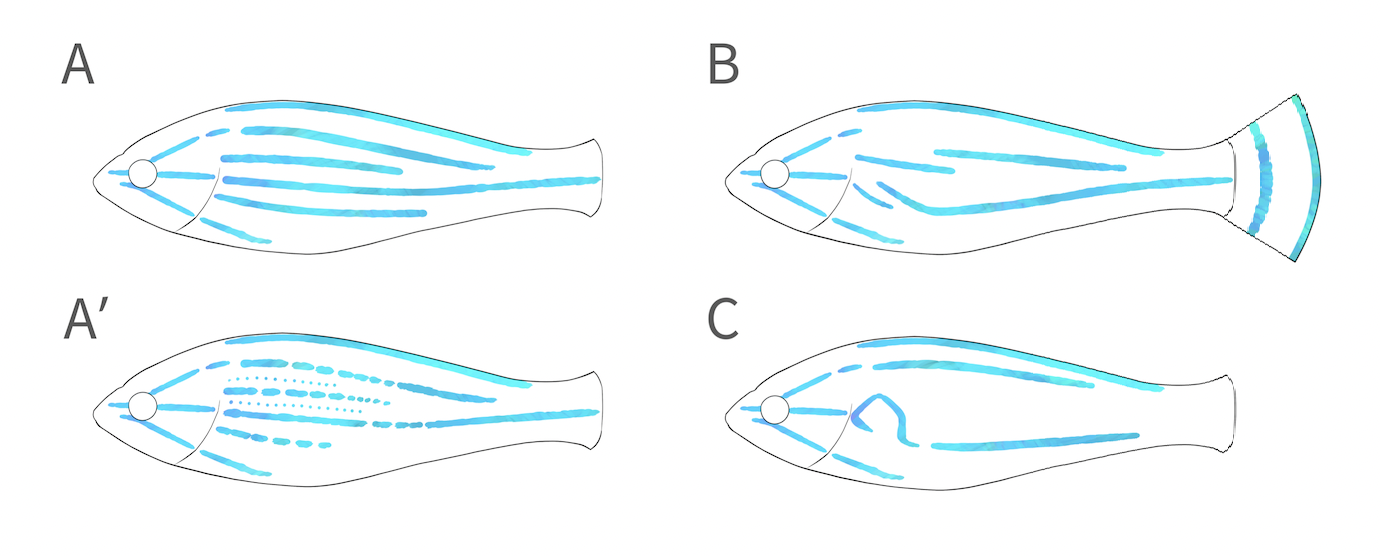
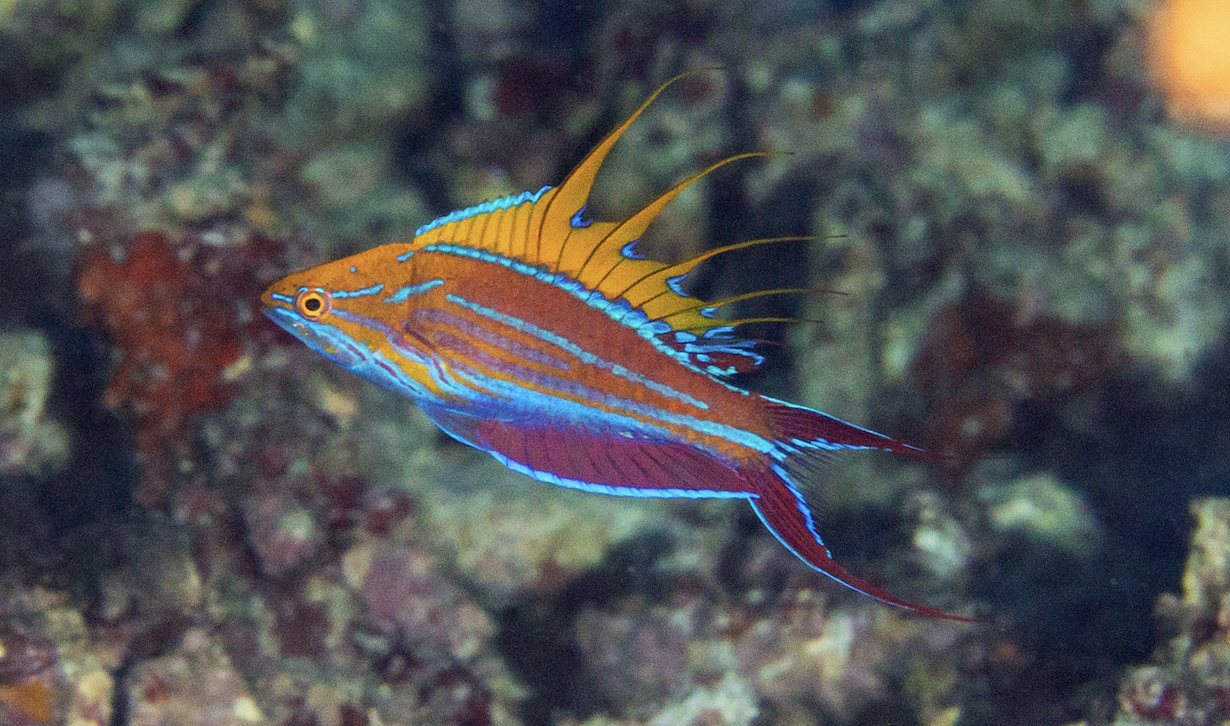
The third species of flasher wrasse reported from Australia is P. filamentosus, the Filamented Flasher Wrasse. Pull out any field guide of fishes of the Great Barrier Reef and this species is bound to be depicted. Yet, no verifiable Australian records of this species exist. Turns out, Australian records of this species are likely a result of unverified accounts perpetuated in the literature. A deep dive into museum collections revealed only a single specimen of the Filamented Flasher Wrasse collected from Lizard Island in 2001. There it sat for 22 years on the shelves of The Australian Museum untouched and unnoticed, until this year, where it serves as the only physical proof of this species’ existence in Australia.
While looking at flasher wrasse specimens across Australia, one specimen stood out as being different. The specimen, housed in the Museum and Art Gallery of the Northern Territory (MAGNT), did not agree with any of the known species of flasher wrasses in Australia. It was a specimen of Paracheilinus nursalim, Nursalim’s Flasher Wrasse, an exceptionally stunning species previously known only from the Bird’s Head Peninsula region of West Papua. But, West Papua is some 1,200 km away. Fortunately, the Australian Museum has two paratypes of P. nursalim for comparison. In addition to some underwater photographs taken by local divers, the identity of the Northern Territory specimen was confirmed to be P. nursalim, the fourth species of flasher wrasse extant in Australia.
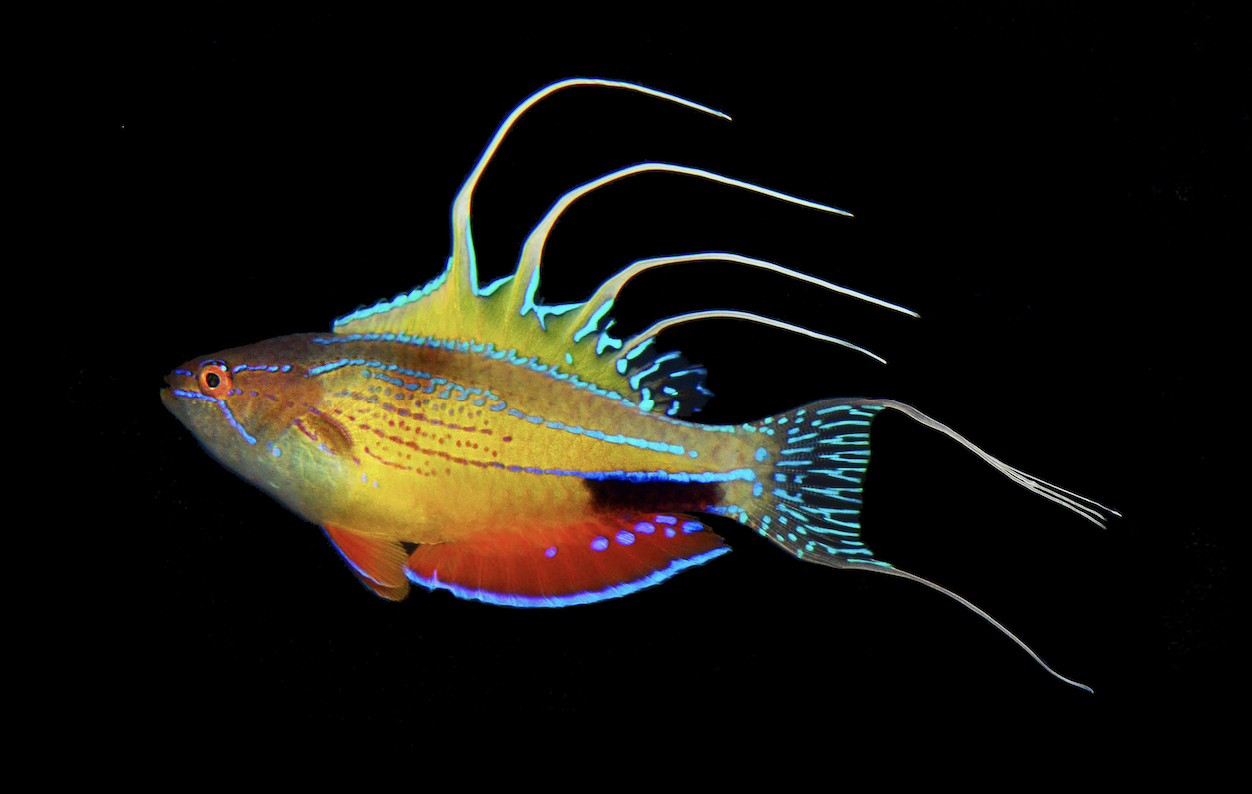
Research efforts like this helps highlights the importance of museum collections and methodical sampling. Even specimens collected 22 years ago from reefs so heavily studied like Lizard Island can have their day in the sun, helping shed light on our understanding of Australia’s coral reefs. If the most colourful and iconic of coral reef fishes can go unnoticed, imagine the biodiversity crisis affecting some of the less noticeable species.
The publication is available here.


